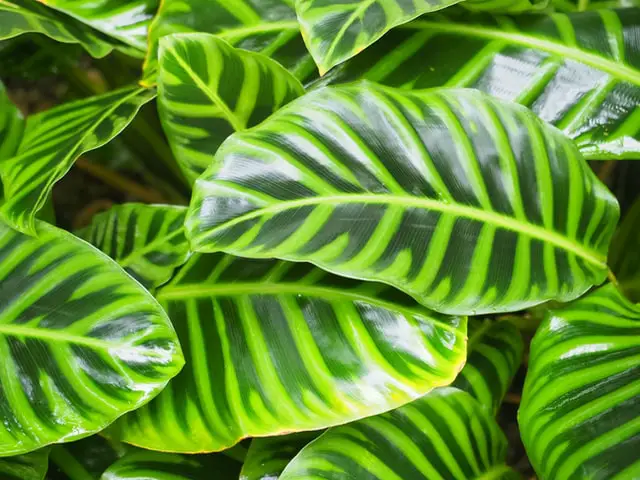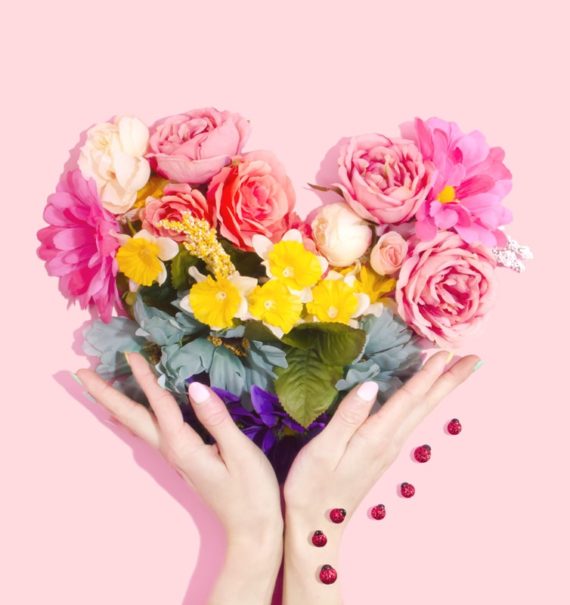Calathea Leaves Curling: 7 Causes And How To Fix Them!

Welcome to my article all about Calathea leaves curling and how to fix them!
Calathea are perennial plants that are native to South American rainforests.
They have oval shaped leaves that feature light and dark shades of green in striped patterns.
Calathea’s also happen to be my favorite type of indoor plant!
I think they look so exotic and beautiful, and I love how the leaves move with the sunlight throughout the day.
A calathea plant is lovely to look at, but in time, you may notice the leaves curling.
In addition to affecting the plant’s aesthetic, you may wonder if this is the result of a deeper issue. And it’s likely that it is!
When a calathea’s leaves curl, it’s usually because of a water issue so it needs to be addressed.
This article will discuss the various reasons why a calathea’s leaves might curl and what you can do to rectify the problem.
Let’s dive in.
Calathea Leaves Curling: Potential Causes
Underwatering: The Most Common Cause
This is the most common cause of calathea leaves curling!
When Calathea leaves are dehydrated, they curl inwards to hold on to the water they have.
You can confirm if underwatering is occurring by looking at leaves. In addition to the curling, they may also be very soft and flimsy, or look brown or yellow.
You can also check the moisture of the soil by placing your finger or a soil moisture probe into it. If the reading on the probe is 3 or below, your plant may be underwatered.
To fix the issue, use distilled or filtered water to water the plant until you see it draining from the holes in the bottom of the pot.
Keep the plant hydrated by watering it once a week or when the top two inches of the soil are dry.
Overwatering
Whilst this is a less likely cause than underwatering, overwatering can also cause calathea leaves to curl.
The watering will waterlog the roots, so they are no longer able to absorb water or nutrients causing leaves to dehydrate and curl.
You can tell your plant is being overwatered as the leaves will turn brown or yellow.
The soil will also remain wet after it’s watered telling you the water is not being absorbed by the plant.
You may also smell an unpleasant odor coming from the soil which is a sign of root rot.
If you suspect your calathea may be a victim of overwatering, give your plant some time to dry out.
Make sure the top 2 inches of the soil are dry before watering the plant again.
Remember, it is always better to underwater than it is to overwater.
If the soil isn’t dry within 2 weeks, repot the plant in a new pot with fresh soil.
Mixing in coarse materials like bark, perlite and fine gravel will boost the soil’s aeration and drainage.
The pot you use should have a drainage hole to drain out excess water.
Low Humidity
If the humidity rate in your home drops below 50%, it will increase the plant’s transpiration rate.
This produces excessive moisture loss that can cause calathea leaves to curl.
It can be difficult to tell if your plant’s leaves are curling due to low humidity or underwatering as both conditions will cause leaves to droop and turn brown.
However, a hygrometer can be used to measure humidity levels and may provide insight on the cause of the problem.
If your plant’s leaves are curling due to low humidity, you can fix the issue with a plant humidifier or pebble tray.
The aim will be to get the humidity level to at least 60%.
Grouping plants together will also be helpful as it will create a humid microclimate growing area.
Watering with Hard Water
Your calathea’s leaves might curl if you’re watering it with hard water.
Some city’s tap water is hard water that contains fluoride, salts and calcium carbonate which are harmful to calathea plants.
Fluoride interferes with photosynthesis in calathea leaves and cause tissue damage while salts and calcium carbonates will build up near the roots making it difficult for them to absorb water and nutrients.
The water loss will result in dehydration causing the leaves to curl.
You can tell your leaves are curling due to hard water because they will turn dry and brittle.
They may also become yellow and brown at the tips which is a sign of fluoride poisoning.
You may also notice a chalky residue on the leaves, stem, and the surface of the soil.
You can correct the issue by repotting your plant in fresh soil. Then water it with distilled or filtered water moving forward.
Over-Fertilizing
You may think there is no such thing as giving your plant too much fertilizer.
But if you over-fertilize the soil, salt will build up around the roots preventing water moisture from being absorbed.
The salt build-up can cause root burn damage and it can eventually kill the plant.
You can tell your calathea is suffering from over-fertilization as it will manifest as a crusty build up on the edge of the pot or on the surface of the soil.
You will also notice lower leaves turning yellow and wilting and the leaf margins and tips turning brown. The roots may appear black or brown.
To remedy this issue, you will need to remove the plant from the soil and cut off the rotten roots.
Then repot it in fresh soil.
In the future, limit fertilization to half the recommended dose and fertilize no more than once a month.
Pest Infestation
Spider mites often feed on calatheas.
You may not see the bugs because they are so small, but you will notice wrinkled, dry leaves with webbing on the underside if an infestation is occurring.
You can repel the bugs by cleaning both sides of the leaves with a cotton or cloth dipped in a water and dish soap mixture.
Then apply neem oil to the affected area.
Wipe down the leaves regularly to prevent infestations from getting worse.
Direct Sunlight and Heat
Excessive heat and sunlight can also cause calathea leaves to dry out resulting in curling and browning.
It is best for plants to be kept at temperature of 60 to 85 degrees Fahrenheit.
If the leaves are curling due to excessive heat, move the plant to a cooler area near a shaded east south facing window (if you’re in the northern hemisphere) as this will produce indirect sunlight.
Move it to a north western facing window if you’re in the southern hemisphere.
It is also advisable to bring plants indoors when the weather is extremely hot or cold so you can regulate the temperature.
Calathea Leaves Curling: Conclusion
When your calathea leaves curl, it is usually the sign of a bigger problem.
Fortunately, many leaf curling issues can be dealt with and eliminated.
I hope this article has helped you restore your calathea to it’s former health and beauty!
If you enjoyed this article, here are some related ones you may also like to read:
Monstera Aerial Roots: What Are They and What To Do With Them
How To Get Rid Of Milkweed Bugs Naturally

About The Author: Hi, I’m Jessica. I’m a Mom of 2 and I love DIY hacks, home decor ideas and non-toxic cleaning tips. I created this website to share my knowledge with a community of like-minded people who love simple, easy and safe ways to keep their home clean and inspiring. I hope you enjoy!








